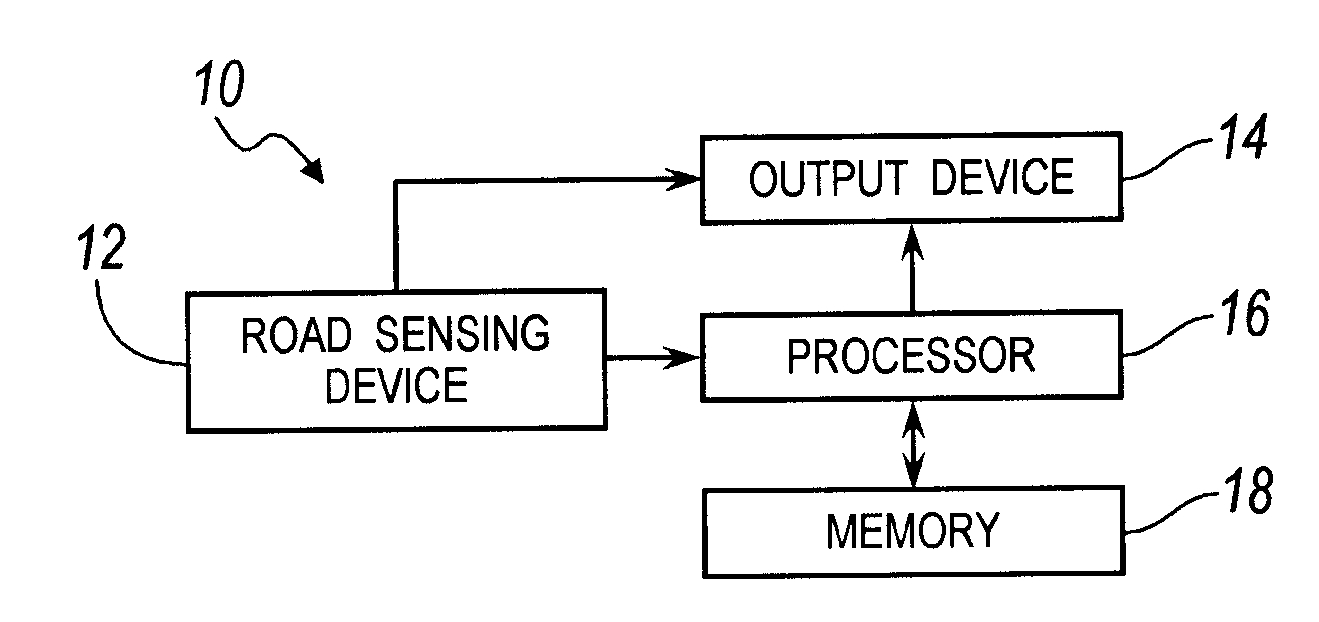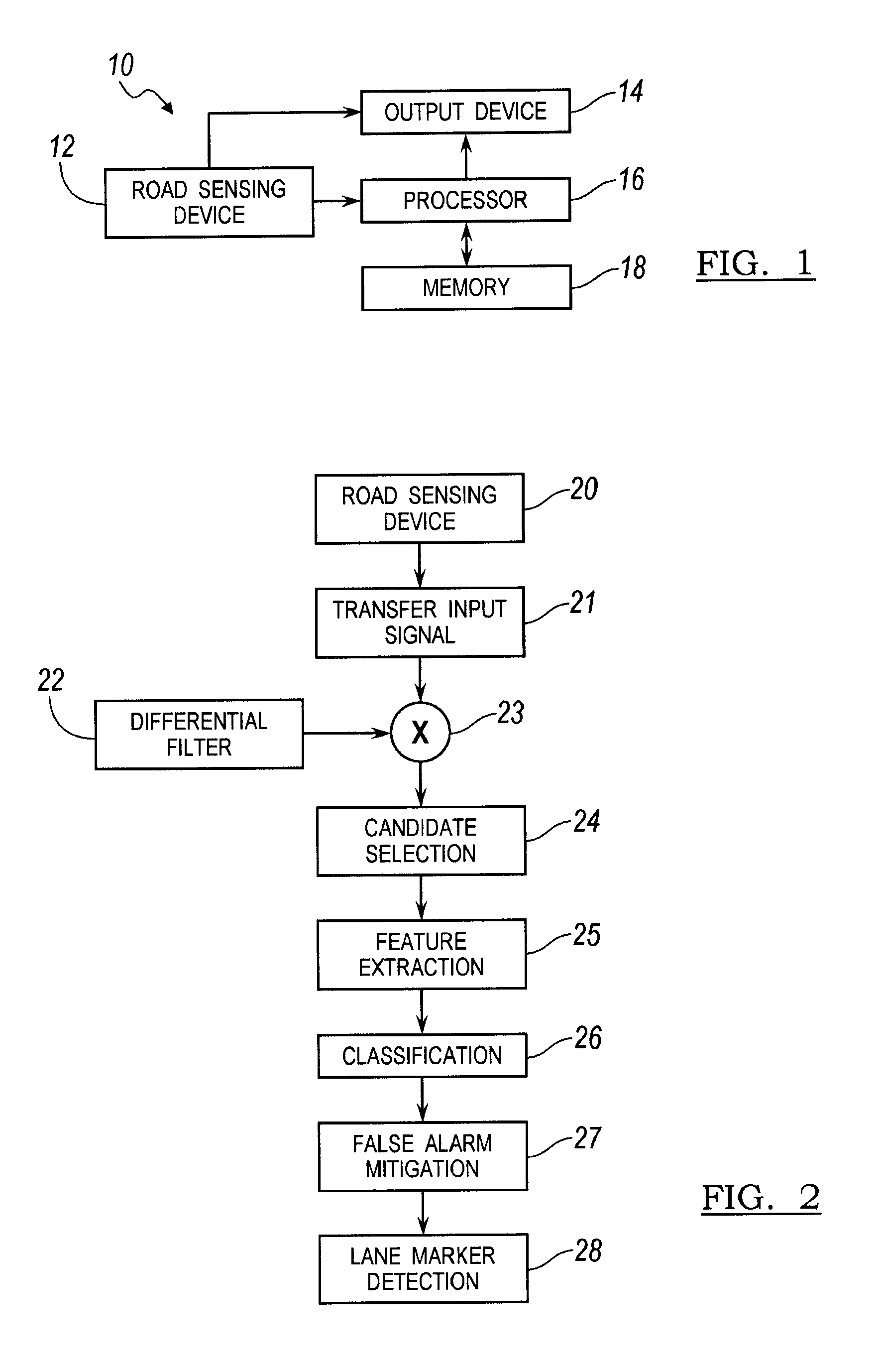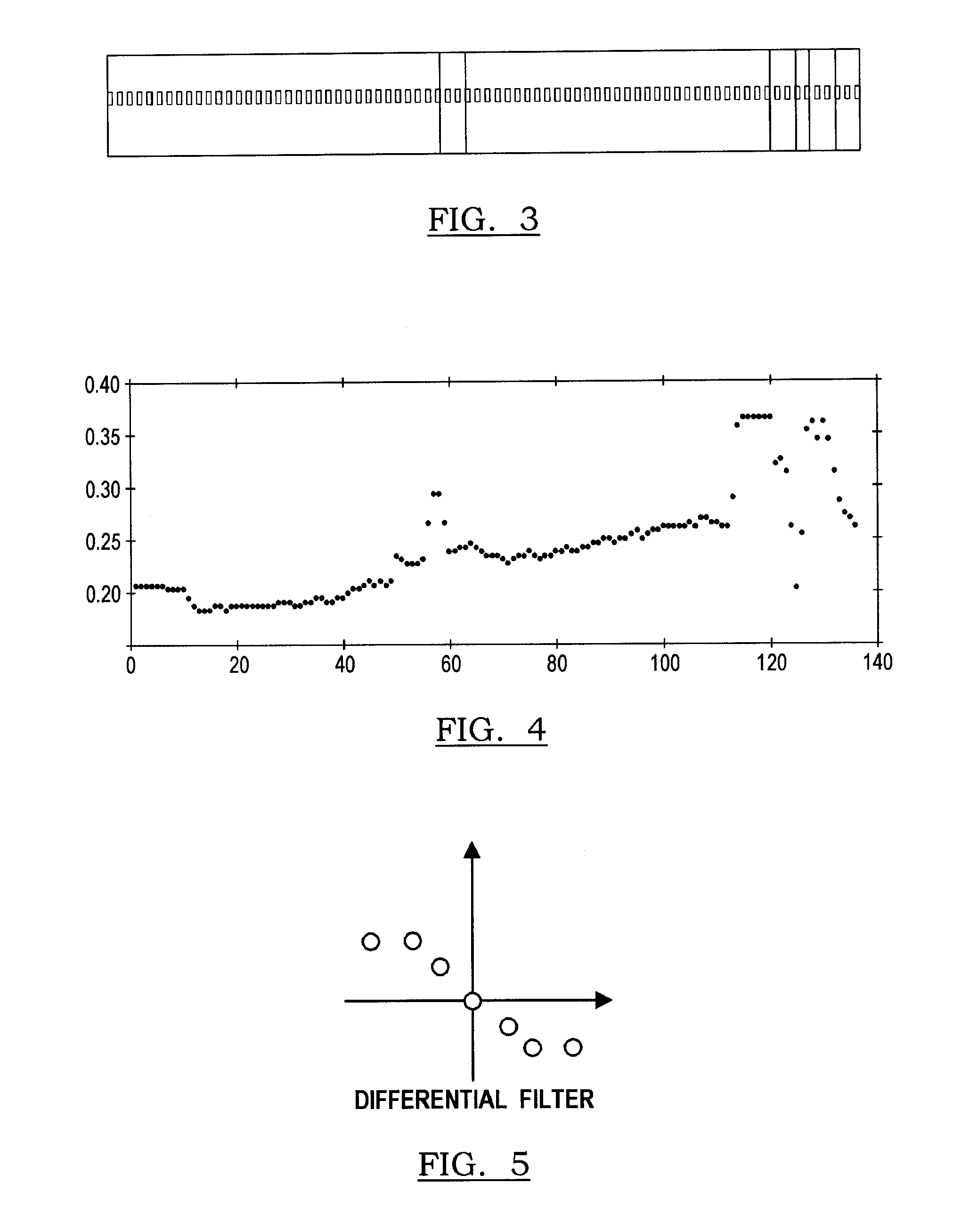Road-lane marker detection
a technology for detecting lane markers and vehicles, applied in the direction of character and pattern recognition, instruments, computing, etc., can solve the problems of vision-based systems being typically challenged, vision-based systems being susceptible to incorrectly distinguishing lane markers, etc., and achieve the effect of reliable detection performance and fast processing speed
- Summary
- Abstract
- Description
- Claims
- Application Information
AI Technical Summary
Benefits of technology
Problems solved by technology
Method used
Image
Examples
Embodiment Construction
[0017]There is shown in FIG. 1 a light-based sensing system 10 for detecting lane markers in a vehicle road. The light-based sensing system 10 is used to detect road lane markers in the road of the driven vehicle. The light-based sensing system 10 is used in an autonomous steering system for road lane marker detection. Alternatively, the light-based sensing system 10 may be used for driver awareness for a vehicle driven by a driver to enhance visibility during the daytime or nighttime when road lane marker visibility is poor or during other instances when visibility enhancement is warranted.
[0018]The light-based sensing system 10 includes a road sensing device 12 including, but not limited to, a Light Detection and Ranging (LIDAR) sensing device or a camera. The LIDAR device measures the properties of scattered light to determine certain characteristics such as reflectivity values for differentiating road lane markings from ground segments (i.e., non-lane markings).
[0019]The light-b...
PUM
 Login to View More
Login to View More Abstract
Description
Claims
Application Information
 Login to View More
Login to View More - R&D
- Intellectual Property
- Life Sciences
- Materials
- Tech Scout
- Unparalleled Data Quality
- Higher Quality Content
- 60% Fewer Hallucinations
Browse by: Latest US Patents, China's latest patents, Technical Efficacy Thesaurus, Application Domain, Technology Topic, Popular Technical Reports.
© 2025 PatSnap. All rights reserved.Legal|Privacy policy|Modern Slavery Act Transparency Statement|Sitemap|About US| Contact US: help@patsnap.com



